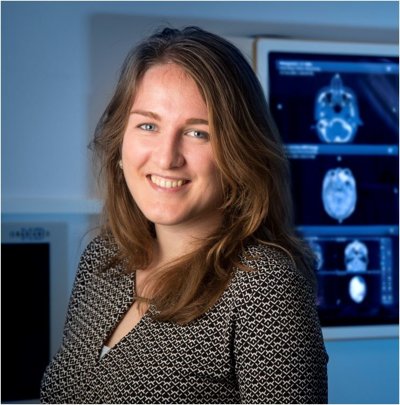Quantitative myocardial perfusion imaging - A novel multimodality validation phantom
The PhD defence of Marije Kamphuis will take place (partly) online and can be followed by a live stream.
Marije Kamphuis is a PhD student in the research group Multi-Modality Medical Imaging. Supervisors are prof.dr.ir. C.H. Slump from the Faculty of Electrical Engineering and Mathematics Science (EEMCS) and prof.dr. R.H.J.A. Slart from the Faculty of Science and Technology (S&T). Co-supervisor is dr. M.J.W. Greuter from the University Medical Center Groningen (UMCG).
 This research aims to contribute to on-site validation and standardization of quantitative, multimodality myocardial perfusion imaging (MPI). Before a clinician can rely on quantitative perfusion values, the measurement technique ought to be reliable and robust. It is challenging to realize the necessary validation and standardization by patient studies alone, inter alia due to widespread variation in MPI scanner and software technologies. The use of functional imaging phantoms could contribute to this clinical need. In this work, the foundation is laid for the development of a multimodality validation phantom for quantitative MPI.
This research aims to contribute to on-site validation and standardization of quantitative, multimodality myocardial perfusion imaging (MPI). Before a clinician can rely on quantitative perfusion values, the measurement technique ought to be reliable and robust. It is challenging to realize the necessary validation and standardization by patient studies alone, inter alia due to widespread variation in MPI scanner and software technologies. The use of functional imaging phantoms could contribute to this clinical need. In this work, the foundation is laid for the development of a multimodality validation phantom for quantitative MPI.
The phantom is aimed at answering clinical questions related to clinical workflows. Hence, a compatibility with both MPI hardware and software is required. This requirement was achieved by utilizing the benefits of 3D printing technology, which resulted in a phantom design with the physical and functional appearance of a generic left ventricle. In terms of functionality, the phantom should mimic arterial input flow and myocardial perfusion dynamics, including tailored (radiolabeled) contrast kinetics. We have introduced a novel concept to mimic such kinetics by incorporating sorption technology in phantom realization. We have demonstrated the concept by filling the phantom’s myocardial regions with variable amounts of specific sorbent (mixtures). Subsequent phantom measurements with SPECT-MPI confirmed that we could alter the contrast kinetic time course, hence the pursuit of a ground truth perfusion measure becomes within reach. With the current setup the absolute mean error between phantom reference flow (1.5 mL/g/min) and software derived myocardial blood flow was around 0.2 mL/g/min. Additional phantom measurements in PET, CT, and MRI highlighted multimodal feasibility. In conclusion, we foresee that future phantom application can provide valuable insight into (and hopefully some grip onto) the evolving MPI field in a controlled and patient representative, clinical setting.





